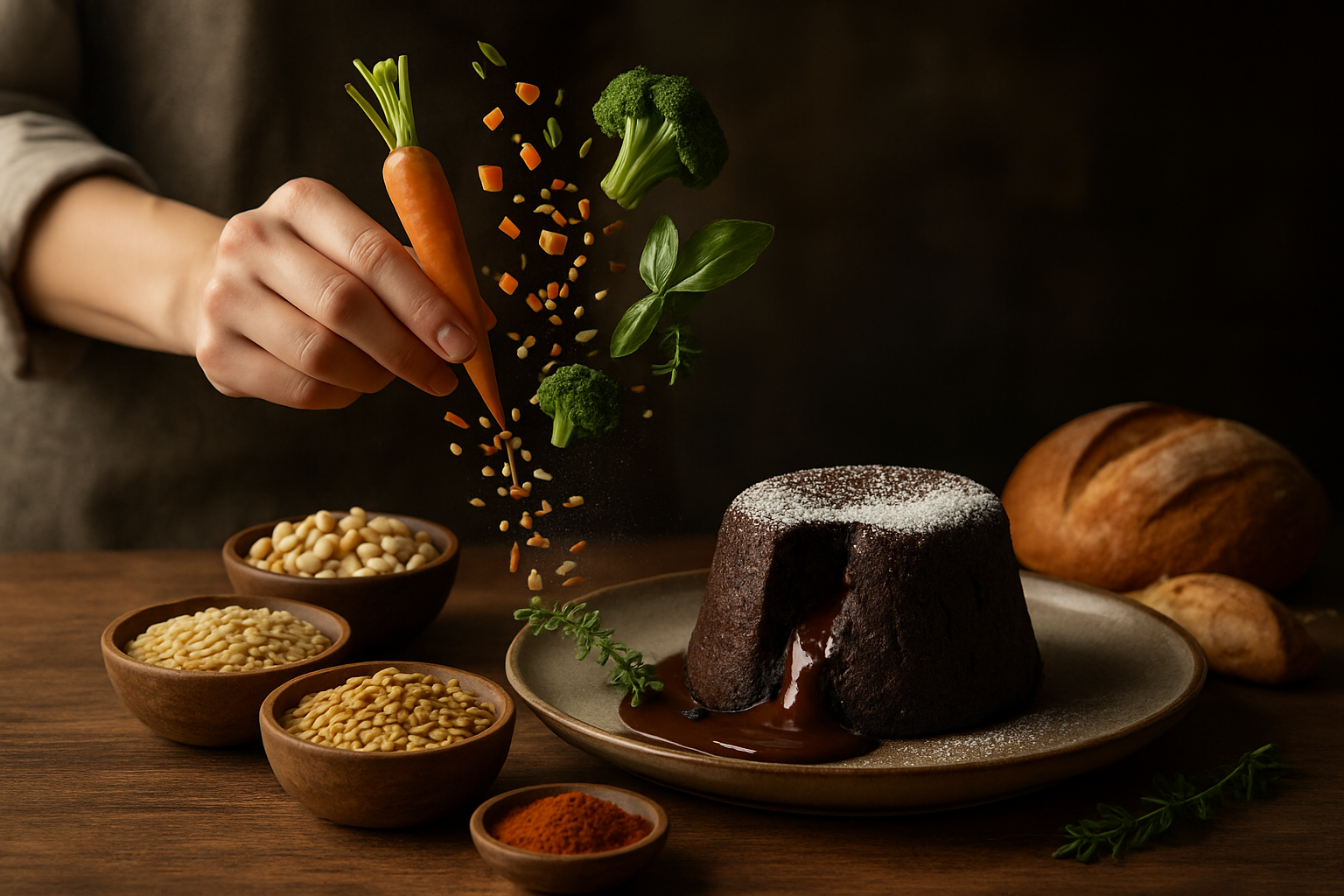Culinary Alchemy: Transforming Leftovers into Gourmet Delights
Breathe new life into yesterday's meals with the art of leftover transformation. This culinary adventure explores innovative techniques to elevate forgotten fridge finds into mouthwatering masterpieces. Discover the secrets of reimagining ingredients, reducing food waste, and creating exciting new dishes that will revolutionize your approach to leftovers.

Texture Transformation Techniques
One of the biggest challenges with leftovers is maintaining or improving texture. Fortunately, there are several techniques you can employ to breathe new life into tired ingredients. For instance, leftover vegetables can be blended into a silky soup or puréed and used as a sauce base. Stale bread becomes crunchy croutons or the foundation for a rustic panzanella salad. Overcooked pasta can be chopped and incorporated into fritters or formed into crispy noodle cakes. Even limp herbs can be revived by blending them into vibrant pestos or chimichurris. By focusing on texture transformation, you can create dishes that are not only delicious but also texturally exciting, making your leftover creations feel entirely new.
Fusion Flavor Combinations
When working with leftovers, don’t be afraid to mix cuisines and flavor profiles. This is where the true alchemy of leftover transformation occurs. That leftover curry could become the filling for empanadas, while last night’s meatloaf might find new life as the base for a Bolognese sauce. Experiment with unexpected pairings, like using leftover pulled pork in a Korean-inspired bibimbap or transforming roasted vegetables into a Middle Eastern-style shakshuka. The key is to think beyond traditional combinations and let your taste buds guide you towards exciting new flavor territories. This approach not only makes your leftovers more interesting but also expands your culinary repertoire.
The Art of Reinvention through Presentation
Sometimes, all it takes to elevate leftovers is a fresh approach to presentation. Instead of simply reheating and serving, consider how you can plate your transformed leftovers in a way that makes them feel brand new. For example, leftover chili can be reimagined as a topping for loaded baked potatoes or used as a filling for stuffed peppers. Yesterday’s roasted vegetables could become a colorful pizza topping or be layered into a visually stunning vegetable tart. By focusing on artistic plating and creative serving ideas, you can make your leftover creations not only taste great but look Instagram-worthy as well. Remember, we eat with our eyes first, so presentation can go a long way in making leftovers feel fresh and exciting.
Sustainable Cooking and Reducing Food Waste
Transforming leftovers isn’t just about creating delicious meals; it’s also a powerful way to reduce food waste and practice sustainable cooking. By using up what you already have, you’re not only saving money but also minimizing your environmental impact. To make the most of your leftovers, start by properly storing them to maintain freshness. Use clear containers and label them with contents and dates. Plan your meals around what needs to be used up first, and get creative with preserving techniques like pickling or freezing. By adopting a zero-waste mindset in your kitchen, you’ll not only become a more resourceful cook but also contribute to a more sustainable food system.
Useful Tips & Facts
• Always reheat leftovers to an internal temperature of 165°F (74°C) to ensure food safety.
• Leftover cooked rice can be frozen for up to six months.
• Wilted herbs can be chopped and frozen in ice cube trays with olive oil for future use.
• Stale bread makes excellent breadcrumbs or croutons when toasted.
• Overripe fruits are perfect for smoothies, jams, or baked goods.
• Leftover wine can be frozen in ice cube trays for future use in cooking.
• Bone broth made from leftover roast chicken or turkey carcasses is rich in nutrients.
Transforming leftovers is more than just a practical cooking skill; it’s a creative challenge that can lead to culinary breakthroughs. By embracing the art of leftover alchemy, you’ll not only reduce waste and save money but also expand your culinary horizons. Each leftover becomes an opportunity to experiment, innovate, and surprise your taste buds. So the next time you open your refrigerator, don’t see leftovers – see potential. With a little imagination and the techniques we’ve explored, you can turn yesterday’s meals into tomorrow’s gourmet delights. Happy transforming!





